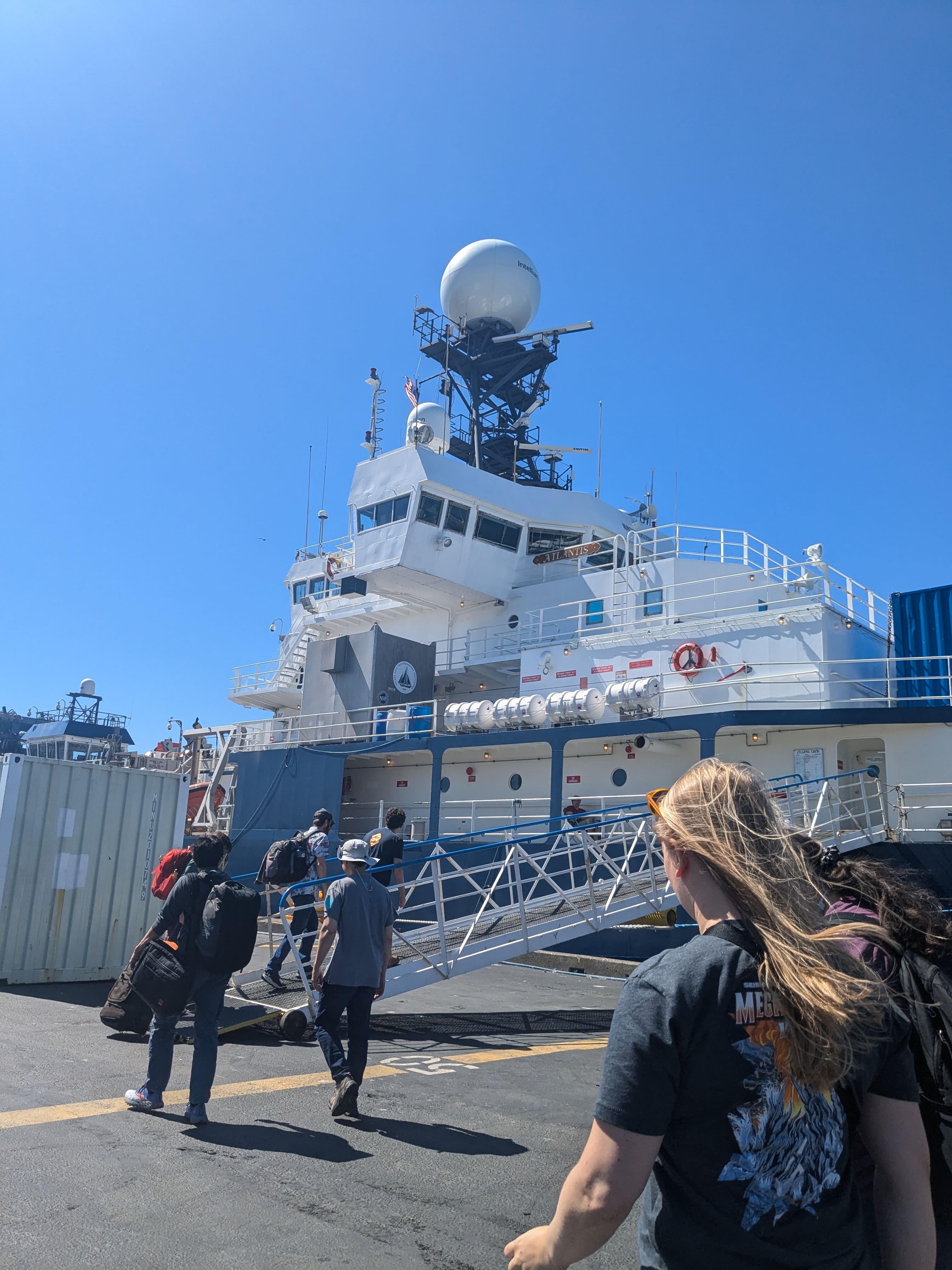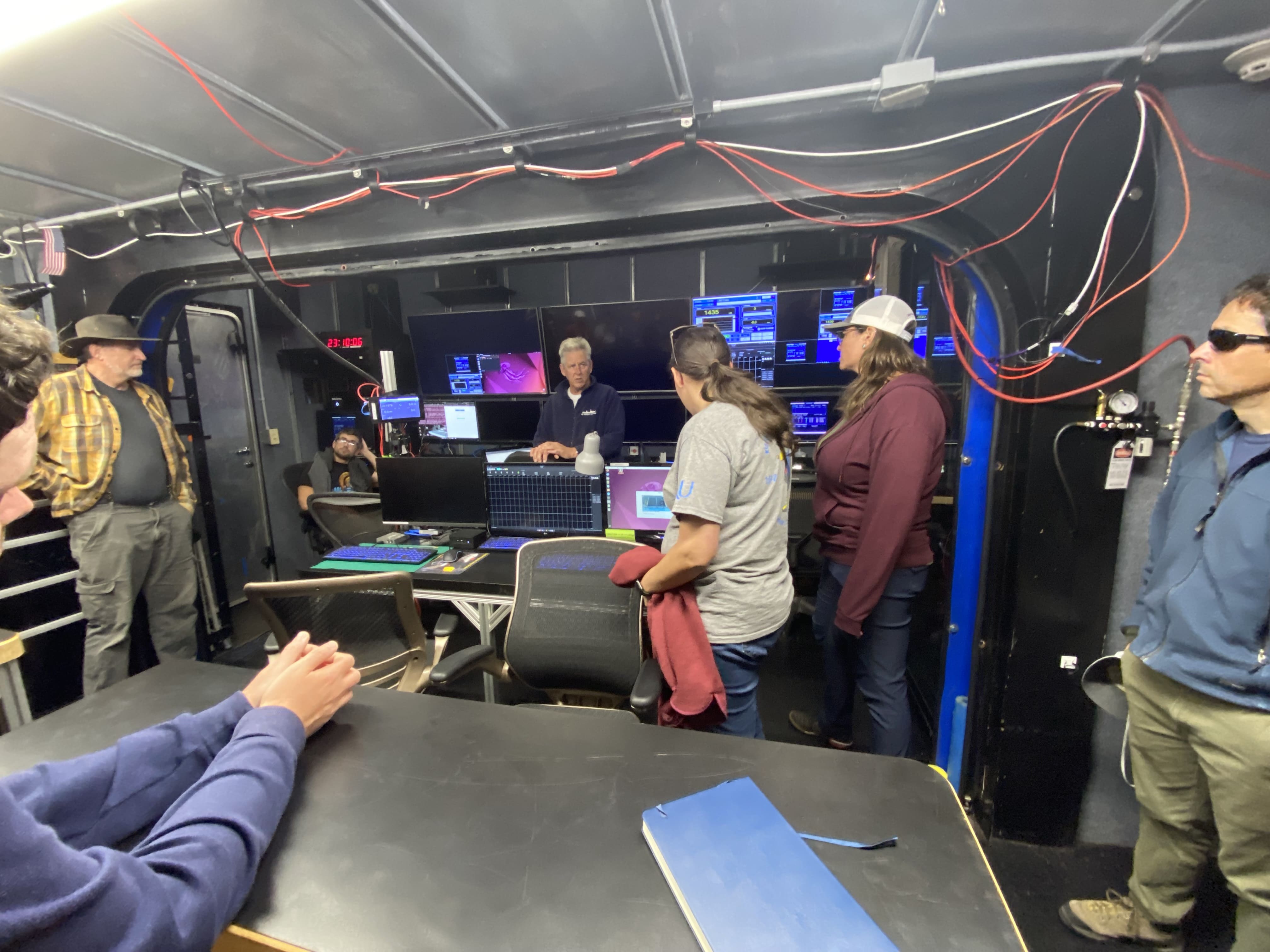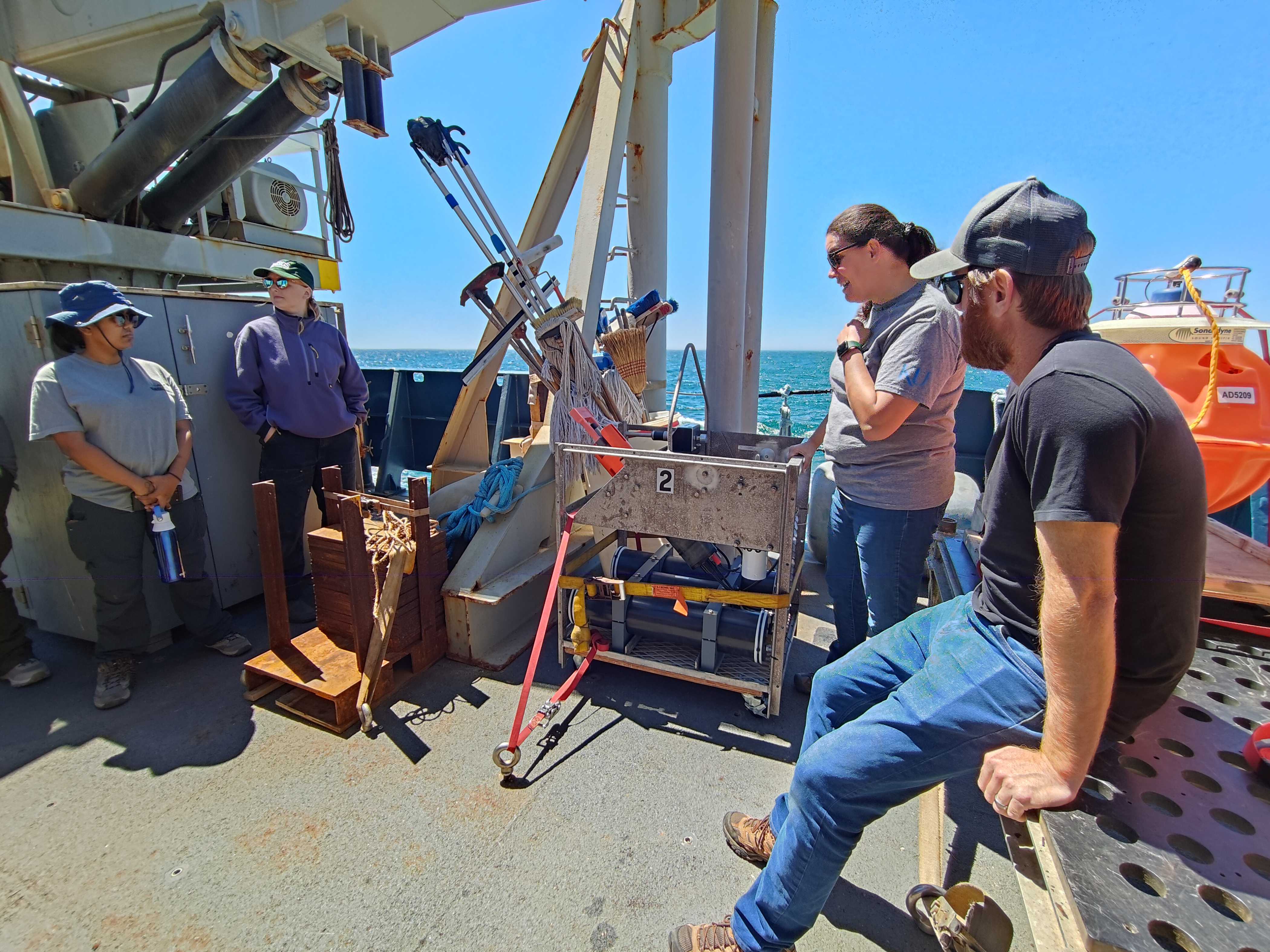All Aboard - Conducting research at sea
Scientists are fascinated by the unknown. For human curiosity, there are two big unknowns: space and the deep ocean. And it is an honor and a privilege to explore one of these unknowns within one’s lifetime. For the longest time growing up, I wanted to be an astro-physicist and an astronaut. As I grew up and my love for rocks and earthquakes took over, that aspiration sort of blended into the background and eventually disappeared. In its place came this desire to go on an expedition to sea and look at the ocean bottom (this desire was also partially triggered by Finding Nemo and Finding Dory :p). So you can imagine the excitement I felt when I got selected to participate in the Apply-to-Sail program of the Near Trench Geodetic Community Experiment to Cascadia subduction zone.
 R/V Atlantis, our home for the next few days as we were boarding the ship.
R/V Atlantis, our home for the next few days as we were boarding the ship.
Apply-to-Sail applications are usually floated around Earth Science focused email listservs. My supervisor sent me the application during one of our regular meetings and asked me off-handedly if I got sea sick. My response: I have never been at sea so not sure, but I did sleep through a particularly rough ferry ride. The application was pretty straight-forward. It asked me about my interests, why and how this research expedition will help my research, and if I got sea-sick. The application also mentioned that it is okay to be sea-sick since everyone gets sea-sick and medications are available to combat that. I applied for this since it fit my research interests on understanding plate boundary deformation at subduction zones. It was also on my bucket-list to be on a research cruise. I was elated when I found out that I was selected to be a participant for this program.
 The scientific laboratory on board the R/V Atlantis. The science party (us) called this our main discussion room. It had all the connections for our tech and things to hold them down in case things got rocky at sea. We all claimed our spot as soon as we boarded.
The scientific laboratory on board the R/V Atlantis. The science party (us) called this our main discussion room. It had all the connections for our tech and things to hold them down in case things got rocky at sea. We all claimed our spot as soon as we boarded.
We had a brief online meeting initially where we introduced each other and the mission goals for our leg of the research expedition. It was nice to meet my fellow ship-mates and hear some stories from people who have been on such research cruises before. We were given a check-list of things to bring on board, general best practices to follow while we are conducting research at sea, and instructions for our travel arrangements. We also got to know a lot about different medications available for sea-sickness and when to take them. After 3-4 months of waiting for the day to come (and constantly checking the “Where is Atlantis now?” webpage link), I finally boarded my flight to Portland, Oregon. After a day of rest and relaxation and meeting everyone in-person over dinner, we all went to bed with a certain amount of excitement and nervousness. Next day, we took our shuttle to Astoria, Oregon where the ship was docked. We were told that we will be spending the night on board the ship and sail early in the morning next day. It also happened to be the 4th of July! We reached the docks and got “checked-in”. We found our berths, saw the science laboratory, got a quick tour of the deck and then went for a group dinner at the local brewery. After dinner, we hurried back to the ship to watch the fireworks unobstructed. We went into our berths after the fireworks and rocked ourselves to sleep (the boat did rock a little bit even when it was docked to the port).
 This is ROV Jason (more on that soon) control room. Our main science objectives were developed around this ROV’s superpower: taking things to the bottom of the ocean!
This is ROV Jason (more on that soon) control room. Our main science objectives were developed around this ROV’s superpower: taking things to the bottom of the ocean!
Bright and early next morning, we finally left the port. We had a hearty morning breakfast and ran up to the deck to say goodbye to land for the next 5 days! The initial moments of leaving the mouth of the Columbia River and heading out to the Pacific was exhilarating. We were also getting used to the swaying movement of the ship and maintaining our balance while we walked up and down narrow stairways. Our exit out of the river was relatively calm (or as calm as it can be along the mouth of the river) and we were told that we are expecting great weather and calm seas for the next week. Yay for us! After our lunch, it was time for orientation and safety training. We met in the conference room/library on board the ship and got housekeeping instructions from the ship crew. The chief scientists for this program also told us about the Board of Lies: a bulletin board that lists the plan of action for the day, subjected to change (hence, lies) as and when required.
From the library, we went back to our science lab to receive a safety training and evacuation briefing. This bit was equal parts challenging and hilarious and also serious. There are certain risks associated with being at sea. One of them being: ship capsizing or abandoning the vessel. We were divided into two groups and taken to different parts of the ship to familiarize ourselves with the assembly and evacuation zones (we also learnt the terms: starboard and port side). We were given safety hard hats and life jackets as well as a gumby suit. A gumby suit is a cold-water submersion and survival suit to protect the wearer from hypothermia in the event of abandoning ship. According to the US Coast Guard, one must don their gumby suit within a minute. However, it is literally the hardest thing to put on. It has crab claw-like mittens and must be zipped all the way up to the nose which is a challenge because the wearer has crab-claws to maneuver a tiny zip. It is also very very hot inside. Imagine an upright lobster. That’s how it looks. It was funny to see everyone struggle to wear their suits but eventually we all did (not within a minute though, sorry US Coast Guard). We got further safety instructions from the Chief Deckmate and then we were all made to take off our gumby suit. Teamwork makes the dreamwork and we finally got out of our lobster costumes.
 The chief scientists of this expedition giving us a brief orientation of the instruments we would be deploying in the ocean and how they work.
The chief scientists of this expedition giving us a brief orientation of the instruments we would be deploying in the ocean and how they work.
After a bit of a breather, it was time for the science party to get together and have a briefing session. In the next part of this story, I will talk about all things science: mission objectives, what is the Near Trench Geodetic Community Experiment, why it is important and some cool things that lurk at the bottom of the ocean.